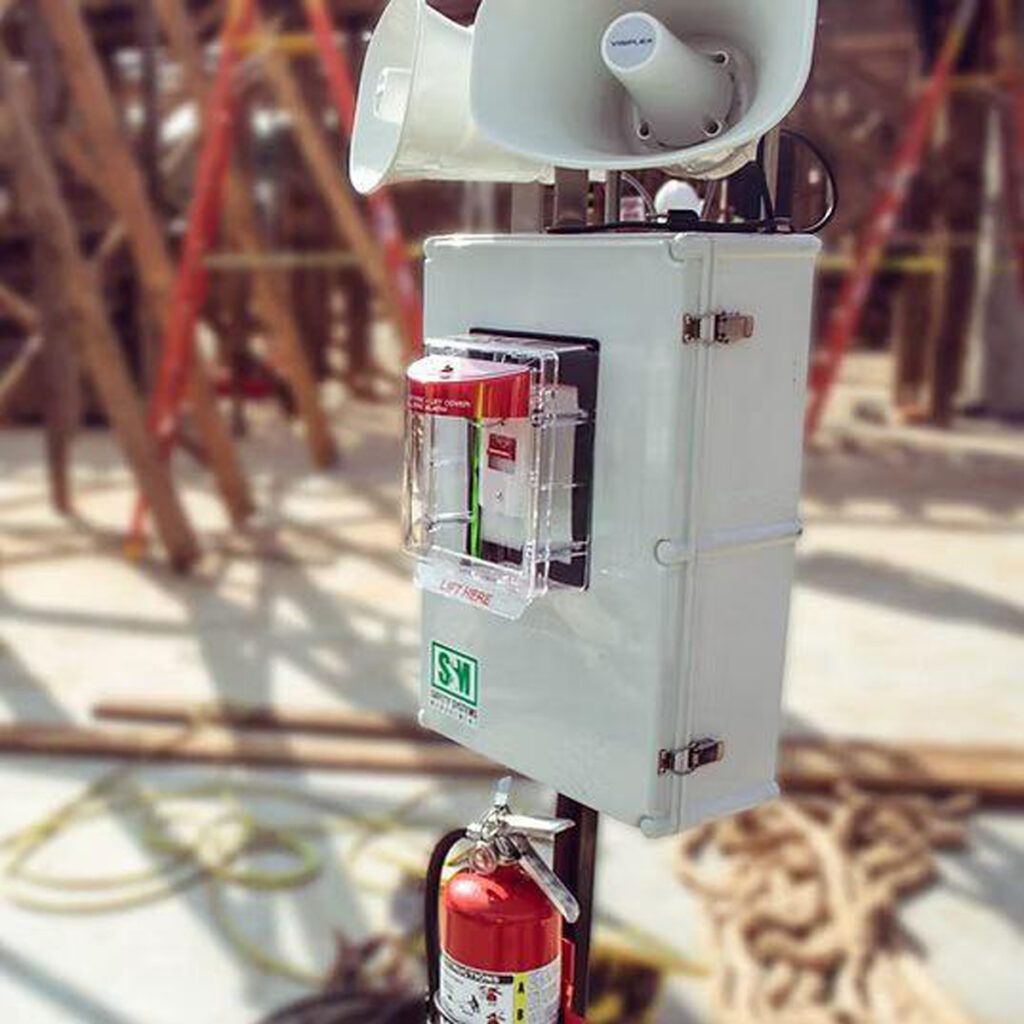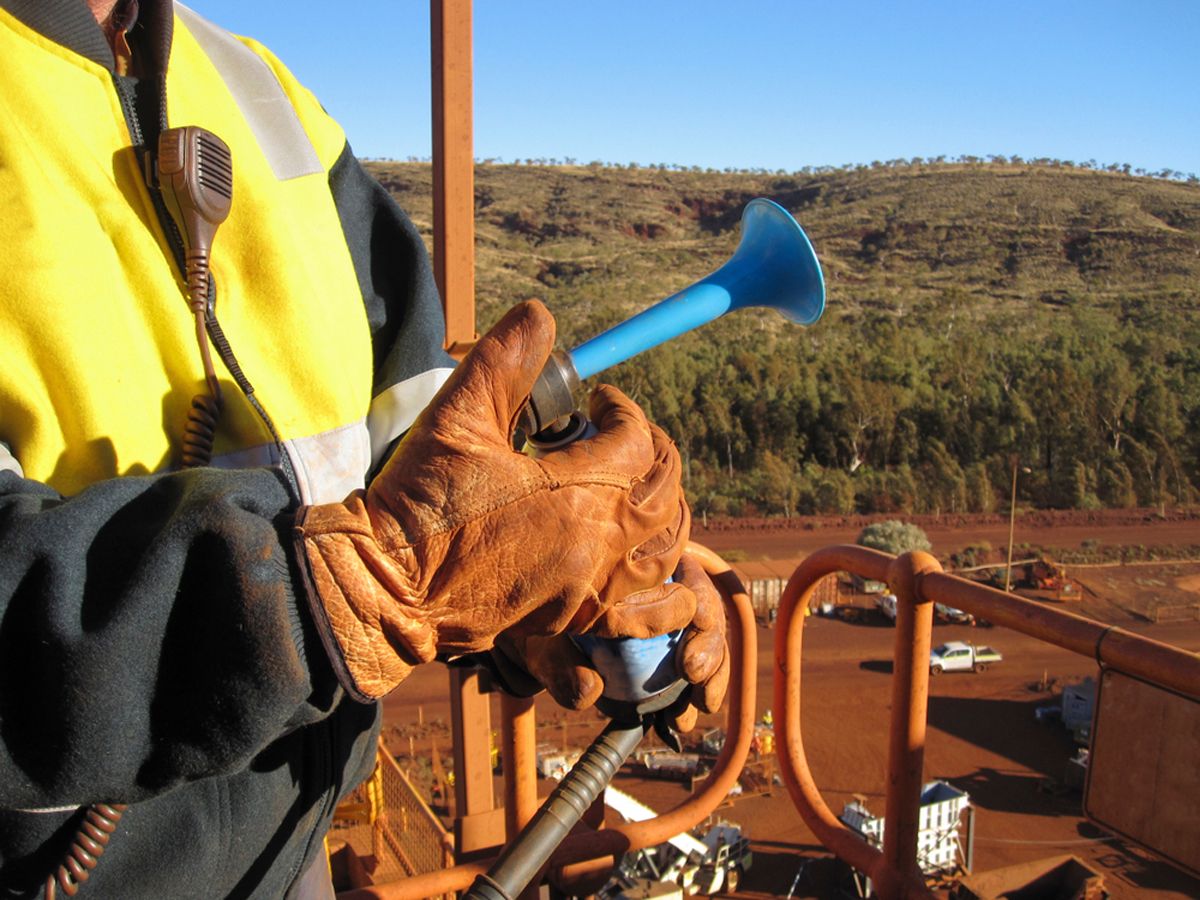It would be terrific if construction companies could encase their workers in bubble wrap, shielding them from virtually every jobsite hazard that might rear its head. Given the unrealistic nature of that option, PPE—or Personal Protective Equipment—is the next best thing.
From hard hats to high-vis vests, personal protective equipment (PPE) is a non-negotiable element of daily operations. What’s more, advances in materials and design have made PPE increasingly effective. Today’s helmets absorb impact more efficiently, most notably because of a concerted push towards Type II safety helmets, which provide protection not only from vertical impact but front, side and rear impact as well.
 Safety harnesses are lighter and more secure. Even work boots have entered the high-tech arena, as they now integrate composite technology to better protect workers without sacrificing comfort.
Safety harnesses are lighter and more secure. Even work boots have entered the high-tech arena, as they now integrate composite technology to better protect workers without sacrificing comfort.
These advances are more than justified when you consider the rate of worker injuries and even fatalities. Even with the best PPE, construction remains one of the most dangerous industries around.
Consider:
- There were 173,200 nonfatal workplace injuries and illnesses reported in the construction sector in 2023, slightly below the national average but still quite high.
- In terms of fatalities, in 2023 the construction industry counted the highest number of workplace deaths in the sector since 2011: nearly three times the national average across all industries.
- But while PPE may reduce harm once an incident occurs, it does little to prevent that incident in the first place, or to coordinate a response when seconds count. That’s where emergency communication plays such a critical role. Yet despite its obvious importance, it rarely receives the same level of scrutiny or investment as PPE, truly a major shortcoming that requires a major course correction.
Emergency Communications Play ‘Second Fiddle’
The truth is, many industries—not just construction—still rely on outdated methods: a single supervisor’s cell phone, an air horn or even shouting across a noisy location. Ask yourself: Would you trust a 30-year-old hard hat to protect a worker in 2025? If not, then why are we still relying on 30-year-old communication methods to protect entire teams?
Construction sites are dynamic, fluid environments. Hazards can develop in seconds: gas leaks, structural instability, fires, electrical faults, extreme weather, even an active shooter situation. In these moments, communication is more than just a way to inform workers as to what is going on; it immediately becomes life-saving equipment.
The questions to be considered regarding the effectiveness of your current emergency notification system are quite simple. Imagine this scenario: A worker is injured in a trench collapse. How fast can the rest of the crew be notified? Does the foreman have a clear channel to summon emergency services? Can you communicate evacuation instructions to dozens or even hundreds of workers spread across an expansive jobsite?
Without a rapid and reliable way to reach everyone with the proper information, a tough situation can quickly turn catastrophic.
Examples like these illustrate the need to treat emergency communication with the same urgency and standardization as fall protection or eye shields. It should be tested, practiced, and visible in safety planning documents.
Unfortunately, it’s often missing altogether. That’s partly because many construction companies fall into the trap of assuming their existing communication tools will suffice in an emergency.
But consider some of the limitations of these traditional methods:
- Radios may not reach every corner of a site, and not all workers carry them.
- Cell phones are slow, are unreliable in noisy environments, and may not even get a signal in remote locations.
- Air horns are confusing at best. Does one blast mean “fire”? “Two mean “evacuate?” Do new hires even know the difference?
- Even if it’s been explained on multiple occasions, are you certain people will remember in a crisis?
This fragmented approach creates confusion, which is highly dangerous when every second is essential. Emergency communication must be unified, clear and purpose-built for the unique needs of each jobsite.
Building a ‘Safety Culture’
A number of construction companies have undertaken a push to develop holistic, organization-wide “safety cultures.” These initiatives are created to emphasize proactive thinking, employee empowerment and an environment where safety isn’t an afterthought; it’s embedded in every decision. But true safety culture can’t exist without effective communication.
- What does a real safety culture entail?
- Workers feel confident reporting hazards without fear of reprisal.
- Everyone knows the plan in the event of a chemical spill or severe weather.
- Evacuation procedures are understood and can be triggered instantly.
- Safety protocols are regularly reinforced through clear, consistent messaging.
- Accountability is expected at all levels, from top executives to field workers.
These aren’t just ideals; they require infrastructure. That’s why more forward-thinking firms are investing in dedicated emergency communication systems, like wireless alert towers, jobsite-wide PA systems, and automated text or voice notification platforms. The impact of these systems is dramatic: response times shrink; accountability improves; workers feel safer; and safety becomes a shared responsibility, not a top-down directive.
Not long ago, the prohibitive cost or the difficulty of implementation prevented these sophisticated communication systems from being deployed. Today, portable wireless towers can be deployed in minutes, while solar-powered communication hubs eliminate the need for hardwiring. And mobile-based platforms can instantly send alerts to every phone on-site.
These systems can be configured for different emergency types—fire, injury, weather, active shooter—and initiate pre-programmed responses based on the situation. The bottom line is that the tools exist. The technology is mature—and affordable. What’s missing is a significant shift in mindset. While not meant to be a complete roadmap, here are five ways to get started down the right path to improved, onsite emergency notification:
Treating Communication as PPE: A Framework
To elevate emergency communication to the status it deserves, companies should take a structured approach, just as they do with PPE compliance.
- Assess the Risks – Each jobsite has unique communication challenges, whether it’s terrain, worker count, or building phase. Identify what could go wrong at each juncture and figure out exactly what’s needed to respond quickly.
- Standardize the Tools – Choose one unified emergency communication platform, and train everyone on how to use it. Post clear signage; workers should know how to initiate and respond to emergency messages, just as they know where to find a fire extinguisher.
- Practice the Protocols – Conduct drills regularly, and test systems weekly. Make emergency communication part of your “toolbox talks.” Practice makes perfect.
- Make It Cultural – Incorporate communication checks into your daily safety briefings. Encourage a “see something, say something” mentality. Recognize and reward workers who model proactive communication.
- Revisit and Improve – Communication protocols should evolve, just like any safety measures. Conducting post-incident reviews to see what worked and what didn’t is a step whose importance cannot be overstated.
It’s time to move beyond PPE as the sole symbol of safety. Helmets and harnesses may protect the individual, but emergency communication protects the team. In an industry built on coordination and collaboration, that might be the most critical protection of all.
The companies that understand this concept will not only reduce injuries, they’ll earn worker trust, improve morale and, ultimately, boost project performance. In a competitive industry, that’s more than a safety win—that’s a business advantage.
Cory Sherman is founder of Safety Systems Management. Follow the company on LinkedIn.












